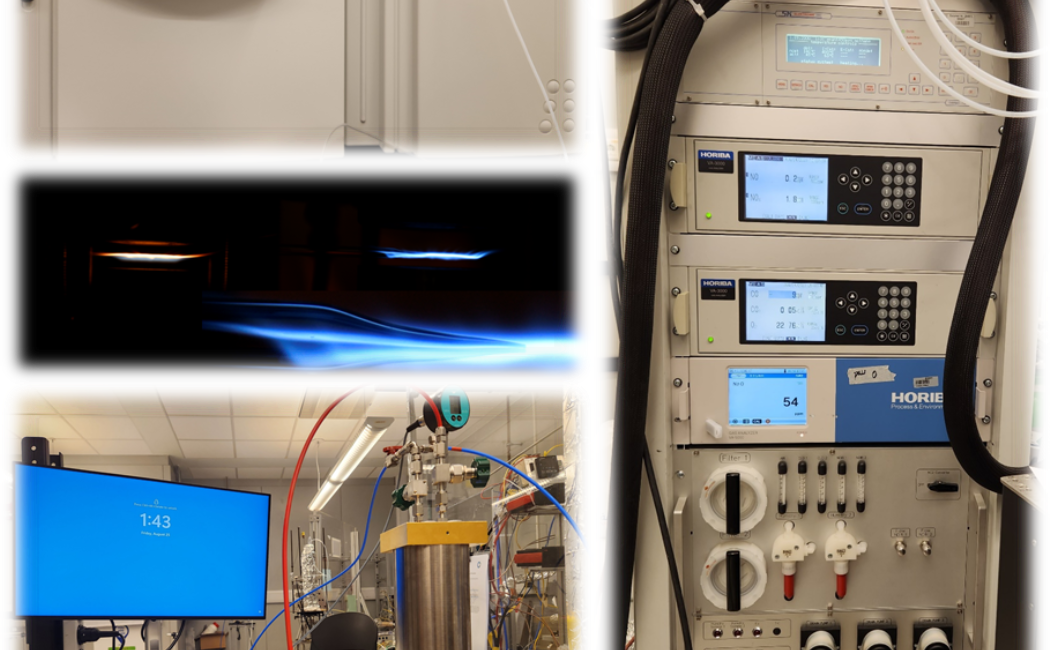


Hydrogen peroxide (HP) serves as both a bleaching agent and a disinfectant. High-concentration HP (>85wt.%) has been utilized as a rocket propellant, leveraging its dissociation to generate thrust for rockets. At lower temperatures aided by catalysts, HP undergoes decomposition, producing oxygen (O2) and water (H2O), thereby releasing a significant amount of energy. These by-products act as oxidizers in combustion, contributing to the CO2 emission reduction.
In the ReSET group, we employ HP-H2O and O2-H2O blends as flame oxidizers, offering an alternative to air for burning hydrocarbon fuels and ammonia. This method prevents nitrogen dilution in flue gas and facilitates the direct capture of carbon dioxide.
We measure temperature, species distribution, extinction limits, and auto-ignition temperatures in laminar diffusion flames, including opposed-flow and inverse diffusion flame burners. Analytical chemistry tools—gas chromatography (GC), Fourier-transform infrared spectroscopy (FTIR), Horiba gas analyzers, and laser-based techniques—are used to analyze flame structures and product compositions.
